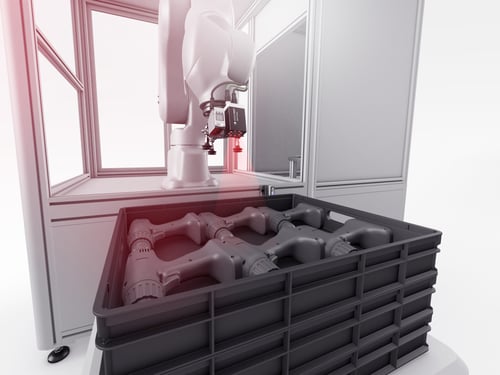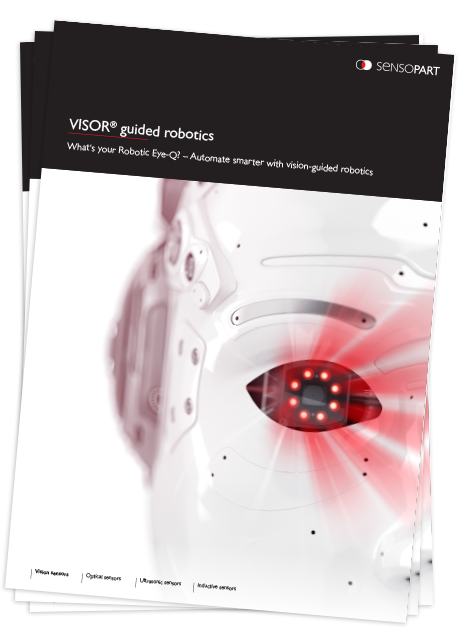Mobile vs. stationary robots: a comparison
Industrial robots play a crucial role in automated production processes. These versatile motion robots with multiple axes enable the programming of motion sequences, paths or angles. There are two different methods: "Fixed Sequence Robots" and "Variable Sequence Robots".
Variable Sequence Robots
Are used for position variations, which frequently occur in mobile robots, for example. They can change their motion sequence quickly and easily in the event of position variations, for example with the aid
of a vision system. A vision sensor provides the robot with the necessary information so that it can easily adapt to changing conditions (e.g. due to flexible processes, product variety or component tolerances).
This is referred to as "image-guided robotics".
Robots can be equipped with various "End of Arm Tools" (EOAT) or end effectors to perform tasks such as gripping, welding, screwing and grinding with high precision and efficiency.
In industrial robotics, two basic categories of robots can be distinguished: stationary robots and mobile robots.
In industrial robotics, two basic categories of robots can be distinguished: stationary robots and mobile robots.
Stationary robots
Are tied to a fixed point and cannot change their location independently. The workspace of stationary robots is limited to their individual kinematics. They work efficiently in systems in which the object is guided to the robot, for example in car body construction. Here, a stationary robot is perfectly adequate.
The working space of a stationary robot can be extended by an additional, 7th axis on which the robot moves on a rail.
A robot can be used even more flexibly if it is guided to the task via a mobile system, using vision-guided robotics. This type of robot is called a "mobile robot" and is typically used when the workplace needs to be changed.


Mobile robots
Enable the flexible and location-independent transport of robots and material in production. There are two types of mobile robots: "Automated Guided Vehicles" (AGVs) and "Autonomous Mobile Robots" (AMRs). AMRs have the ability to move freely in space without relying on external navigation features such as induction loops. This allows them to be used in almost any environment.
To meet the requirements for accuracy and speed, mobile robots are often used in combination with vision systems. Integrating a vision sensor into the robot system enables greater flexibility, especially for complex or variable tasks. This allows vision-guided robotics systems to adapt flexibly to new environments or requirements.
A further increase in workspace and flexibility is achieved by combining a mobile robot with a cobot. "Cobots," also known as "collaborative robots," are a rapidly growing branch of robotics. They are designed to work closely with humans without the need for elaborate external safety technology such as protective fencing systems. Cobots offer a safe and efficient solution to support human workers and provide ergonomic relief. Mounting cobots on mobile robots creates a flexible and mobile automation solution. This combination allows the robot-guided system to be used flexibly at different locations without the need for a separate robotics cell or station.
Summary
Both stationary and mobile robots play an important role in automated production processes. While stationary robots are tied to a fixed point and perform repetitive tasks in a predefined sequence, mobile robots offer flexible and location-independent material handling. Both types of robots can benefit from a vision sensor such as the SensoPart VISOR® Robotic, which provides precise position information and enables greater flexibility. The VISOR® Robotic sensor has a proven track record in both stationary and mobile robotic systems, helping robots adapt to new environments and requirements. As technology continues to develop, the applications of stationary and mobile robots in industry will continue to expand and help enable efficient and flexible production processes.
Get the brochure
Find out how you can automate smarter
Adapt fast and better meet the needs of your business challenges with VISOR® Robotic series vision sensors.
